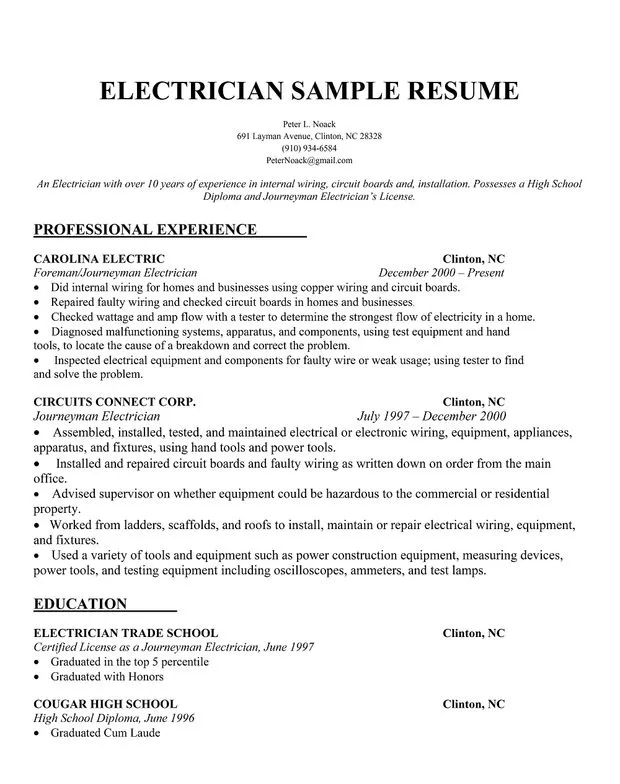Crafting Your Electrician Apprenticeship Cover Letter
Embarking on an electrician apprenticeship is a fantastic pathway to a rewarding career. A well-crafted cover letter is your first chance to impress potential employers and secure an interview. This guide will walk you through the essential steps to create a compelling cover letter that showcases your enthusiasm, skills, and qualifications for an electrician apprenticeship. Your cover letter should not only highlight your interest in the field but also demonstrate your understanding of the trade and your commitment to learning and professional growth. It’s your opportunity to stand out from the crowd and make a lasting impression, setting the stage for a successful application process and a promising career in the electrical industry.
Researching Apprenticeship Programs
Before you start writing, research the specific apprenticeship programs you’re applying to. Identify the requirements, skills they value, and the types of projects they’re involved in. Visit the websites of local unions, trade schools, and electrical contractors to gather information. Understanding the program’s goals and values will help you tailor your cover letter to their specific needs. This targeted approach demonstrates your initiative and genuine interest, making your application more appealing. Furthermore, familiarize yourself with the terminology and standards used in the electrical industry, as this shows your commitment to the profession.
Understanding the Requirements
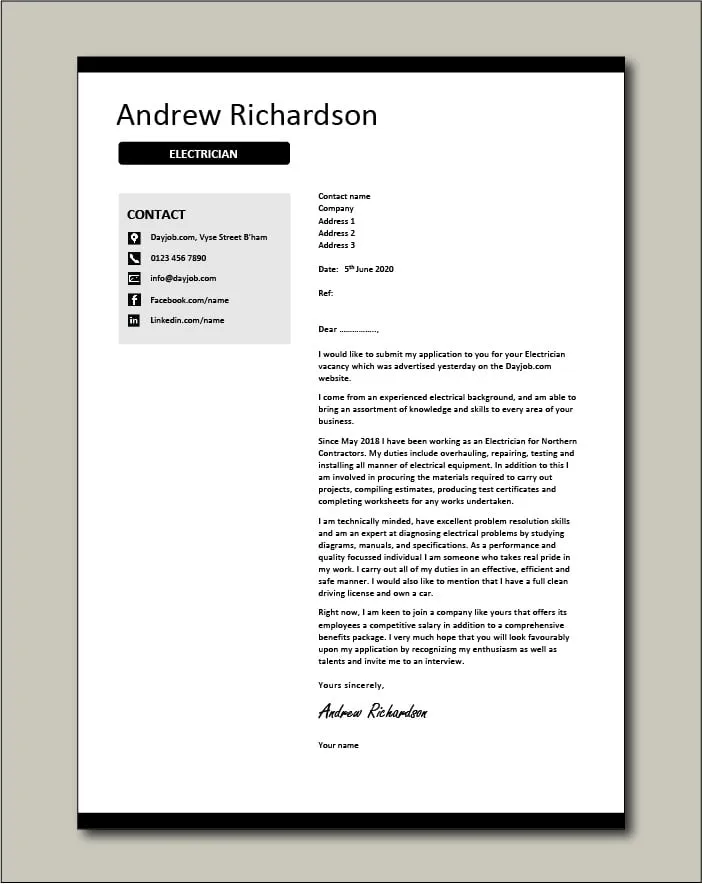
Carefully review the apprenticeship program’s requirements. These typically include educational qualifications, such as a high school diploma or equivalent, and sometimes require specific coursework in math, science, or shop classes. Note any required certifications, such as a driver’s license, and be sure to address them in your cover letter. Some programs may require a certain level of physical fitness or the ability to work at heights. Highlighting that you meet these requirements will demonstrate that you are a strong candidate. If there are any specific application instructions, such as a preferred format or deadline, follow them precisely.
Highlighting Relevant Skills and Experience
Your cover letter is the perfect place to showcase your relevant skills and experience. Even if you have limited professional experience, highlight any skills you have that relate to the electrical trade. This could include experience with tools, problem-solving abilities, or any relevant coursework or training. Describe any projects you’ve worked on, even if they were personal or volunteer projects, where you applied skills like wiring, troubleshooting, or construction. Quantify your accomplishments whenever possible; for example, instead of saying you ‘helped with a project,’ mention how many people were involved or the specific tasks you completed. This makes your qualifications more tangible and impressive.
Skills to Showcase in Your Cover Letter
Technical Skills
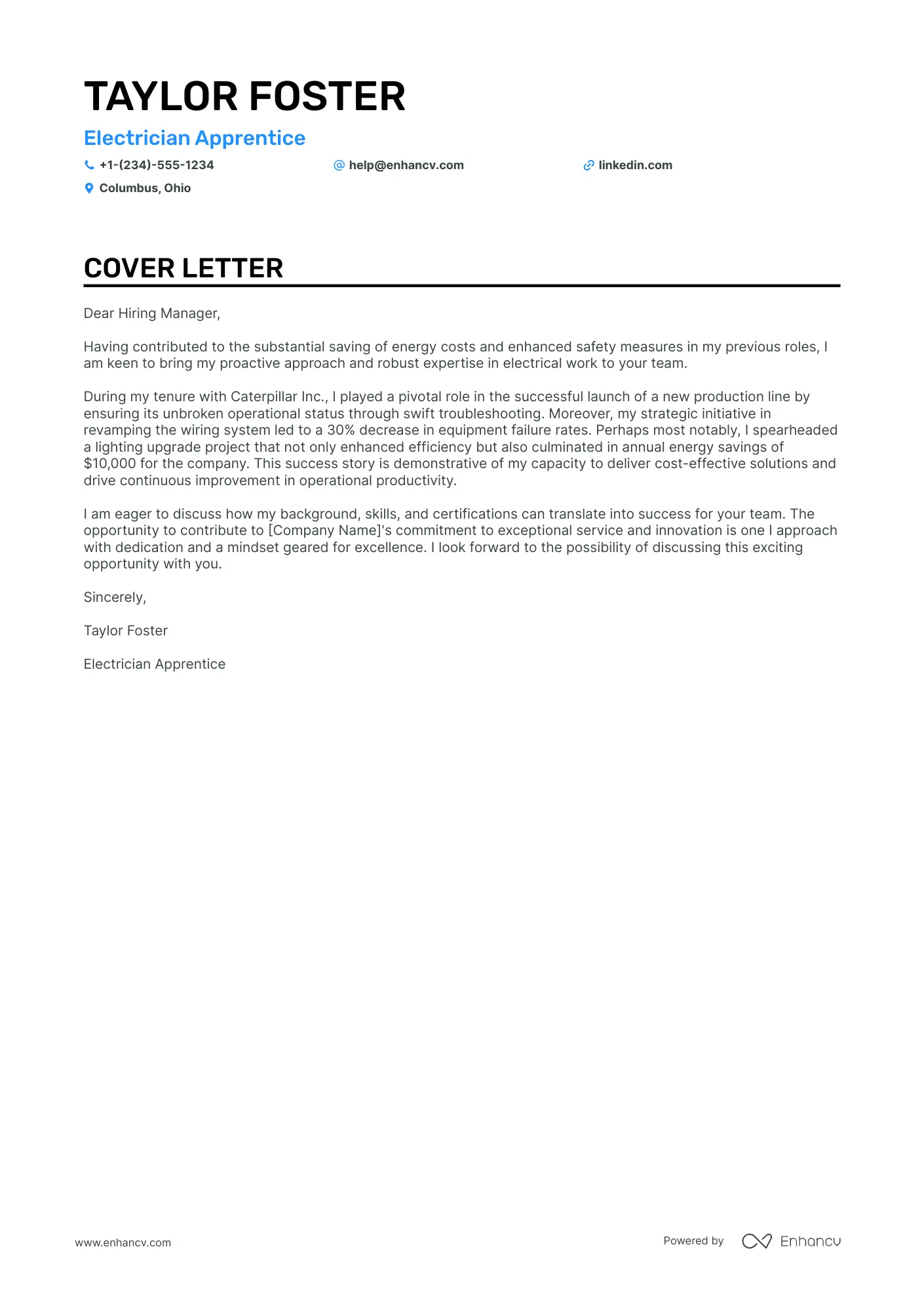
Focus on any technical skills you’ve acquired. This might include experience with hand tools, power tools, or electrical testing equipment. Mention any experience you have with reading blueprints, wiring diagrams, or following safety protocols. Highlight any relevant coursework, such as electrical theory or practical applications, and any certifications or training you’ve completed. Emphasize your understanding of basic electrical concepts, such as voltage, current, and resistance. If you have any experience with specific types of wiring, electrical systems, or equipment, be sure to mention them. Your goal is to demonstrate that you possess a foundational understanding of the trade.
Soft Skills
In addition to technical skills, highlight your soft skills. These are essential for success in an apprenticeship and in the electrical industry. Emphasize your ability to work in a team, communicate effectively, and follow instructions. Demonstrate your problem-solving abilities by describing how you’ve overcome challenges in previous projects. Mention your attention to detail, your commitment to safety, and your willingness to learn and adapt. Highlight any leadership experience, and provide specific examples of your communication, teamwork, and problem-solving abilities. Soft skills are as crucial as technical skills, and emphasizing them will show that you’re a well-rounded candidate ready to thrive in an apprenticeship program.
Structuring Your Cover Letter
The Header
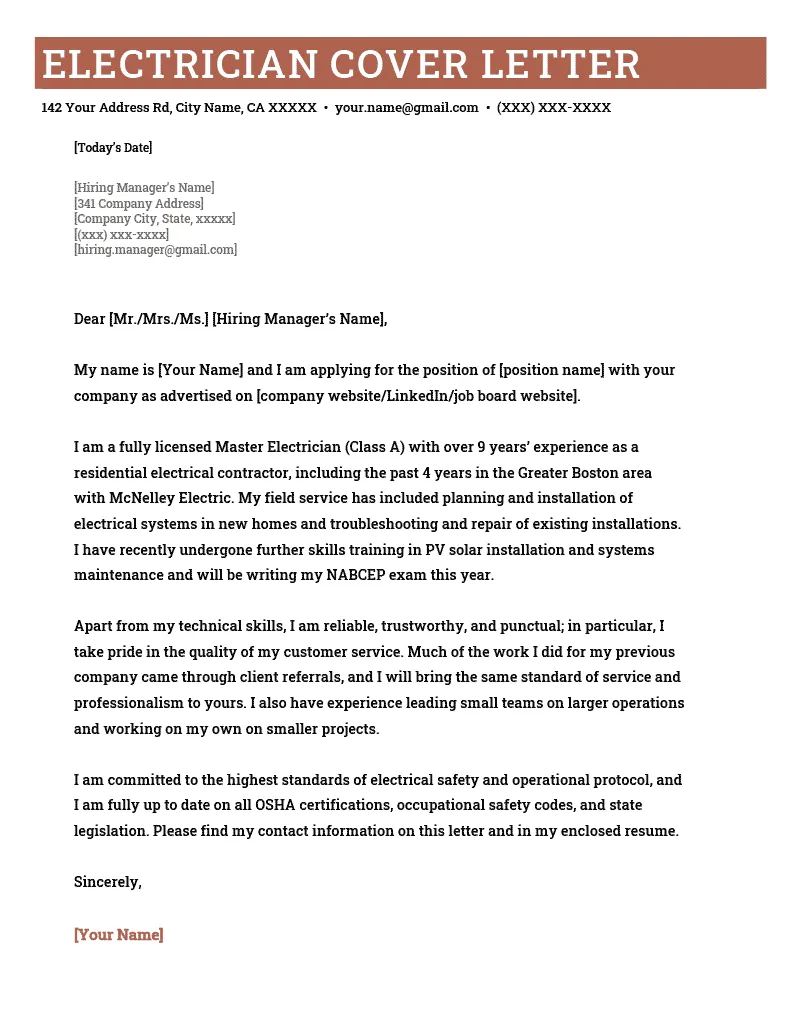
Start with a clear and professional header. Include your full name, address, phone number, and email address. If you’re applying for a specific program or position, include the date and the name and address of the company or contact person. Make sure your contact information is accurate and up-to-date. A well-formatted header sets a professional tone and makes it easy for the employer to reach you. Ensure the font and layout are clean and easy to read.
The Salutation
Address your cover letter to the hiring manager or the specific person listed in the job posting if possible. Use a formal salutation like ‘Dear Mr. / Ms. Last Name’ or ‘Dear Hiring Manager.’ Avoid using generic greetings like ‘To Whom It May Concern.’ Researching the company or program and addressing your letter to a specific person demonstrates your initiative and attention to detail, both important qualities for an apprentice.
The Body Paragraphs
The body of your cover letter is where you showcase your skills, experience, and enthusiasm. Start with a strong opening paragraph stating your interest in the apprenticeship program and how you learned about it. In the following paragraphs, highlight your relevant skills and experience. Use specific examples to demonstrate your abilities. Explain why you’re interested in an electrician apprenticeship and what you hope to achieve in the trade. Conclude with a paragraph summarizing your qualifications and expressing your eagerness to learn and contribute to the program. Tailor each paragraph to the specific requirements and values of the apprenticeship program.
The Closing
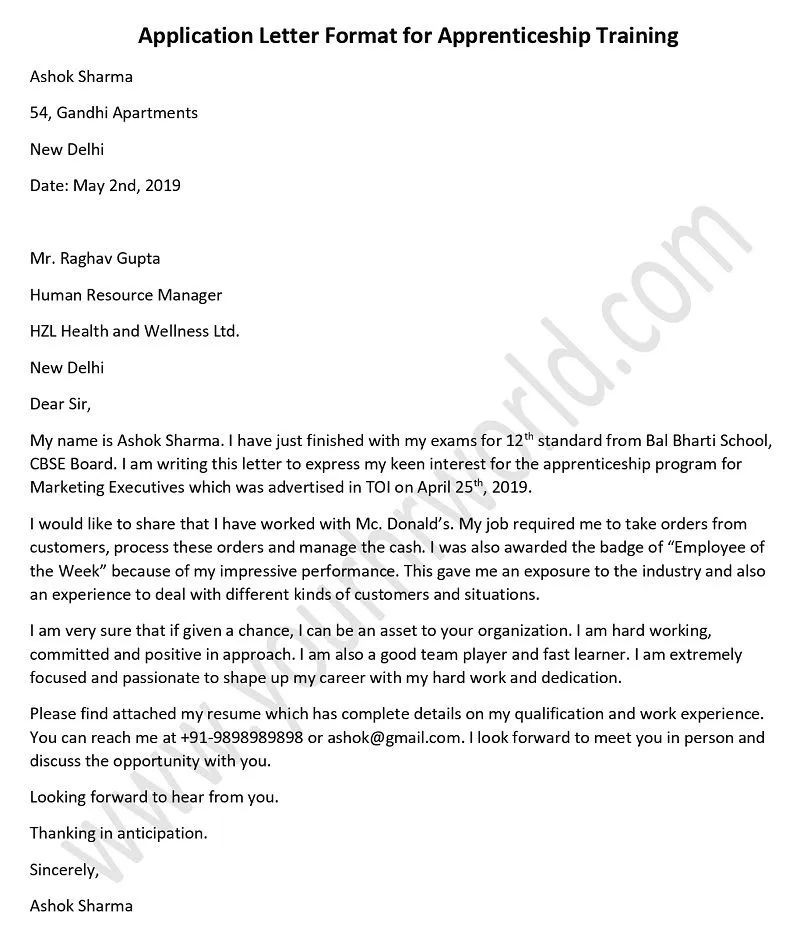
Conclude your cover letter with a professional closing. Thank the reader for their time and consideration. Reiterate your interest in the apprenticeship and your eagerness to hear from them soon. Include a call to action, such as ‘I look forward to the opportunity to discuss my qualifications further.’ Use a formal closing such as ‘Sincerely’ or ‘Best regards,’ followed by your typed name. Ensure your contact information is readily available in the closing section, making it easy for the employer to reach out.
Formatting and Proofreading Your Cover Letter
Formatting Guidelines
Maintain a clean and professional format throughout your cover letter. Use a standard font, such as Times New Roman or Arial, in a legible size (11 or 12 points). Use single-spaced lines and a standard margin (1 inch) on all sides. Use clear headings and subheadings to organize the content. Ensure the letter is well-structured, easy to read, and visually appealing. Proper formatting shows attention to detail and professionalism, qualities that are highly valued in the electrical industry.
Proofreading for Errors
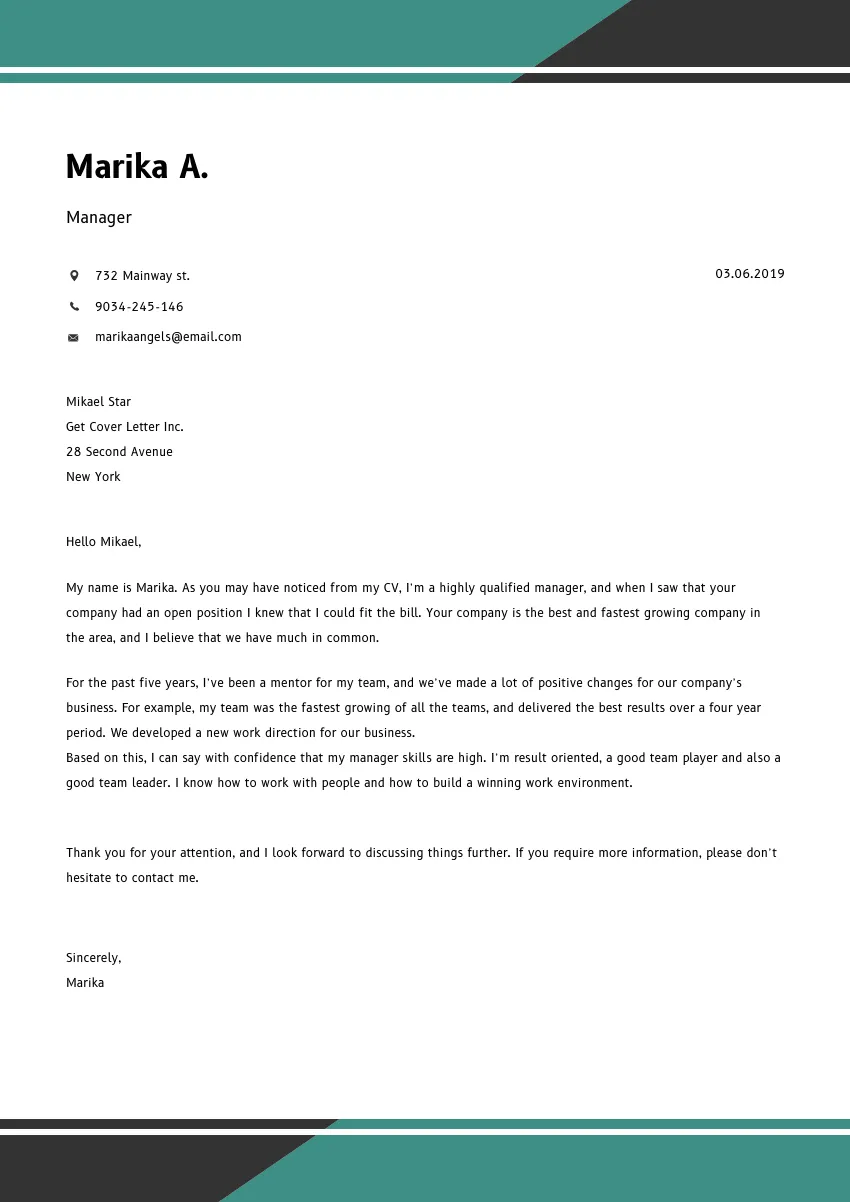
Before submitting your cover letter, meticulously proofread it for any errors in grammar, spelling, punctuation, and formatting. Errors can create a negative impression and undermine your credibility. Use a grammar and spell-checking tool, but don’t rely on them entirely; always read your letter carefully to catch any mistakes. Have someone else review your cover letter to catch any errors you might have missed. A polished, error-free cover letter demonstrates your attention to detail and your commitment to excellence, greatly increasing your chances of success.
Submitting Your Cover Letter and Application
Follow the specific instructions provided by the apprenticeship program or employer for submitting your cover letter and application. This might involve submitting it online, by mail, or in person. Ensure you include all required documents, such as your resume, transcripts, and any other supporting materials. Submit your application before the deadline. Double-check that all your documents are correctly formatted and are in the proper file type. Following these instructions meticulously shows that you are organized and capable of following directions, key traits in the electrical trade. After submitting, it is a good practice to follow up a week after to make sure everything is received, which will showcase your interest.
